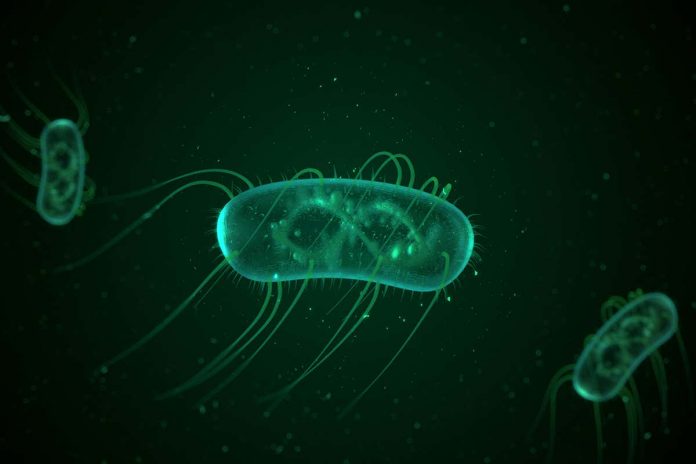[ad_1]

Getty Images/iStockphoto
DNA inside living bacterial cells has been edited with CRISPR technology to encode and store information. This could be a step towards developing a new medium for long-term data storage.
Life’s genetic information is stored in DNA, but there is growing interest in using DNA as a storage medium for other kinds of data. To do this, information is often encoded using the four DNA bases – adenine (A), cytosine (C), thymine (T) and guanine (G). The corresponding DNA sequence can then be chemically synthesised in a laboratory, and even stored within everyday objects.
Harris Wang at Columbia University in New York and his team took this one step further, using a form of CRISPR gene editing to insert specific DNA sequences that encode binary data – the 1s and 0s that computers use to store data – into bacterial cells. By assigning different arrangements of these DNA sequences to different letters of the English alphabet, the researchers were able to encode the 12-byte text message “hello world!” into DNA inside E. coli cells.
Advertisement
Wang and his team were subsequently able to decode the message by extracting and sequencing the bacterial DNA.
“This field is progressing exponentially and this paper is a great example,” says George Church at Harvard University, who wasn’t involved with the work.
Wang thinks DNA inside living cells could be a more stable medium for long-term storage in unpredictable conditions. Whereas DNA kept outside cells can be degraded, bacteria have the ability to adapt to changing surroundings and can survive under harsh conditions. “What you’re offering by putting it inside the cell is that the DNA is protected by the cell and the machinery that the cell has to protect its DNA,” says Wang.
“This can be very interesting for long-term storage,” says Thomas Heinis at Imperial College London. But as bacteria adapt and change, their DNA changes too – and these changes could affect the encoded information, says Heinis. “There are many sources of errors, one major source being mutations in the DNA during cell replication,” he says.
“They are a very long way from having a working system that replaces our digital devices,” says Nick Goldman at EMBL-European Bioinformatics Institute in Cambridge, UK. “But it’s a little step along the way to something that might do that.”
Journal reference: Nature Chemical Biology, DOI: 10.1038/s41589-020-00711-4
More on these topics:
[ad_2]
Source link











